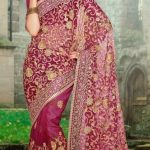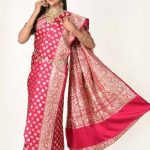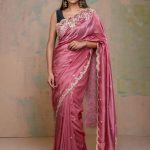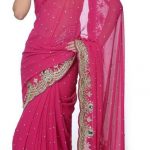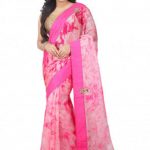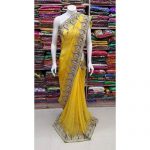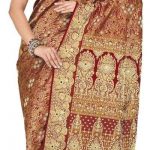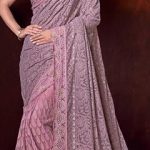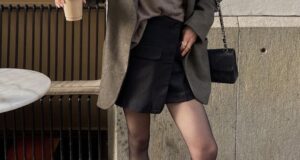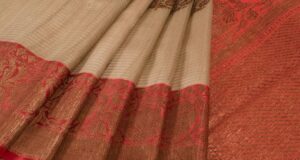One of the timeless forms of embroidery techniques in India is the icon “Zardosi”. It is also one of the oldest styles for the design of fabrics that originally came from the country of Persia. Zardosi Sarees were strongly supported by the royal women because of their grandiose and luxurious appearance. Their popularity peaked during the Mughal era when these textiles were even used for decorative purposes.
Let us take a trip back in time to this fascinating time this wedding season and create similar looks with these Zardozi work sari and impress the crowd! The golden glow and lavish feel they give is hard to match with other strains. So why wait? Read along as we discuss some interesting facts and details about these curtains as well as 10 latest designs!
Meaning of the Zardosi Sarees:
Although we are told that Zardosi was introduced by Persian artisans, his mention in Rig Veda indicates his actual age. The name “Zardosi” consists of two words “Tsar” and “Dozi” which, when translated into English, mean “gold” and “embroidery”. In the original process, pure golden threads and precious pearls and stones were used to decorate a saree. Although it is centuries old, its popularity has not waned and is now a source of promising livelihood for hundreds of artisans in the country.
Features of the Zardosi Work Sarees:
Here are some of the characteristic features of these exquisite curtains:
- Zardosi is a kind of elaborate embroidery, which is made of metal threads of gold or silver into a stable fabric.
- The cloth is first attached to a wooden frame and then the pattern is drawn on it.
- The metal wires in various designs are inserted into the fabric with a needle. Elements such as sequins, pearls, stones and crystals are added to this stitch for a rich look.
- Different types of stitching techniques are used to achieve different looks, such as: B. Laid Stitch, Back Stitch, Satin Stitch, Run Stitch etc.
- The result is a heavy design on the edges and body of a saree, which usually consists of floral motifs, geometric patterns, birds, animals or even the traditional “Jaal” work.
Fabrics used in Zardosi Work Sarees:
The process by which Zardosi works is labor intensive and complicated. Heavy materials such as stones and metals and other tools such as hooks are also used. For this reason, materials such as silk, velvet and cotton silk are preferred because they are tightly woven and can carry the weight of the embroidery. However, chiffons and georgetts are also used for machine-made work due to their low cost and maintenance.
How to style Zardosi Sarees?
No matter what material or what kind of work you choose in a saree, it is your styling that makes the difference. Follow these expert tips to kill like a diva:
- Before choosing a saree, ask yourself the following questions: Where do you want to take this saree to? How do you imagine your appearance? What is the timing and scope of the event?
- Once you find answers to these questions, your selection becomes easy. For easy occasions, choose silk or flowing saree with additional zardosi edges. This gives you a rich look without going over the top.
- For weddings and high-profile events, you can opt for a heavy saree made of silk or velvet, in which the fabric is embedded. These are expensive, but worth every penny!
- Invest in handmade blouses that complement the elegance of your saree.
- Zardosi saris and Polki jewelry are a heavenly game. Choose stone-based accessories like jadaus, kempu or even uncut diamonds.
- Opt for a trendy hairstyle and add a Maang Tikka if you want to look special.
- Complete your outfit with a Kundan clutch and sandals and lo and behold! You are ready!
These are some of the best Zardosi Saree designs we’ve put together especially for you! Whether it’s a simple party or a big celebration, you can put these saris into festive mode right away. They are shiny and glittery but not garish, which makes them one of the most popular choices made by Indian women. You can also play it safe or get brave by experimenting with your color palette and the level of embroidery used. So if you take this Persian route?
 sanideas.com Fashion Ideas
sanideas.com Fashion Ideas
